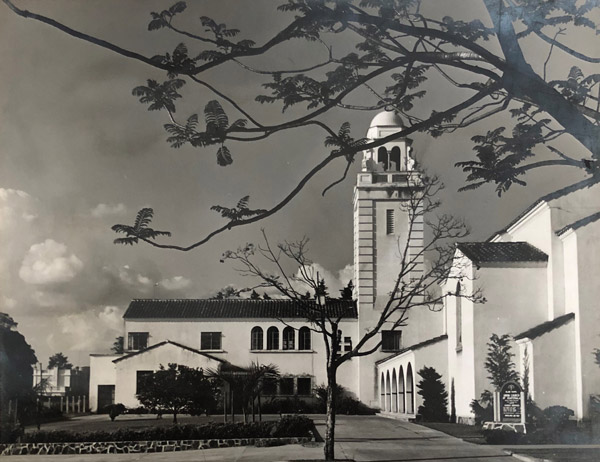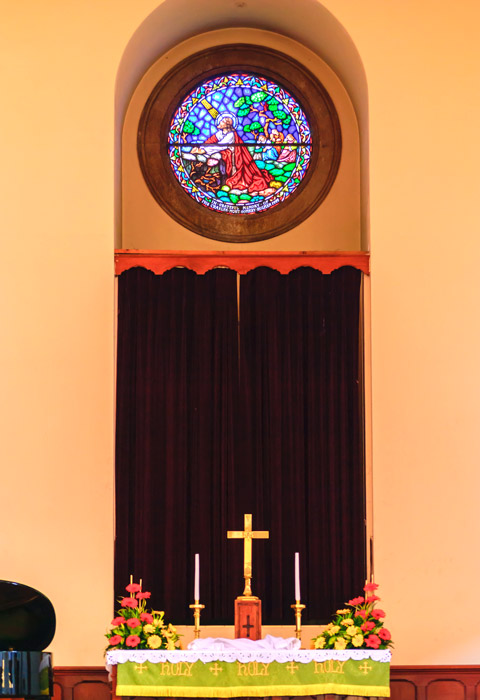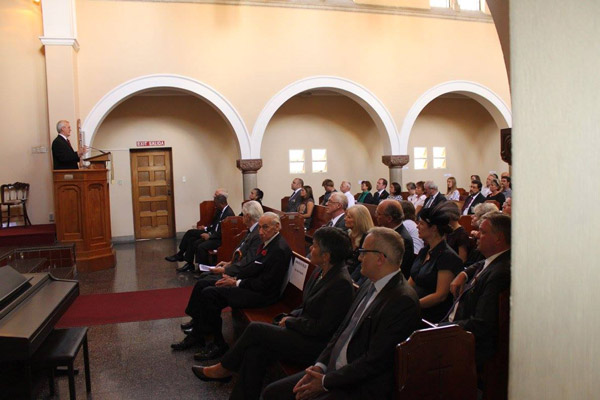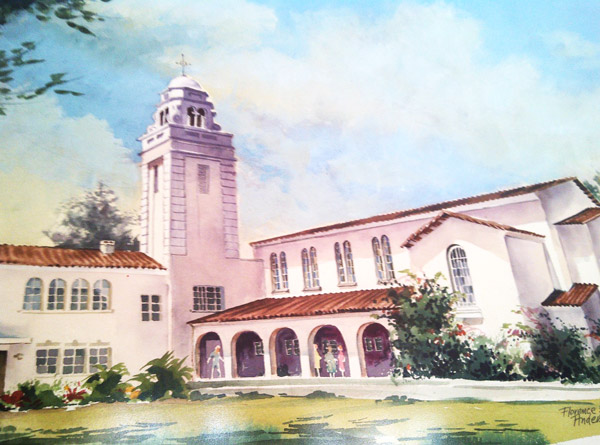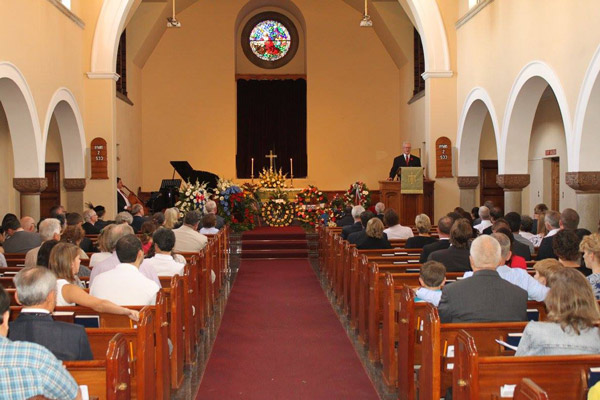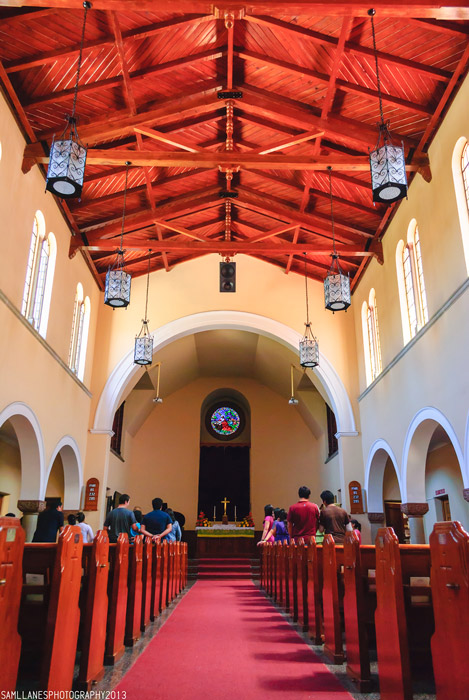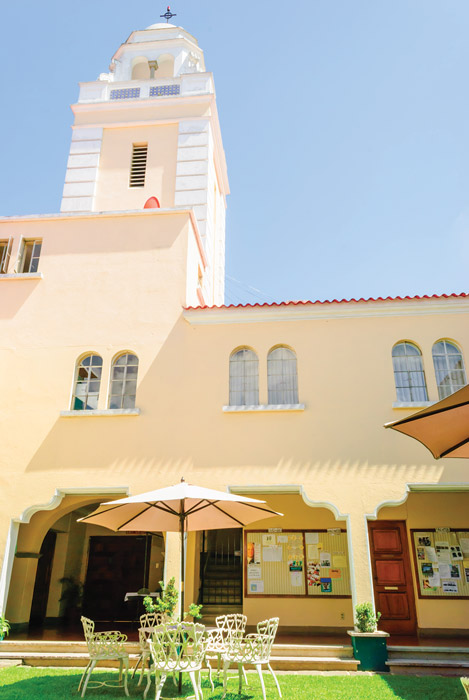The Union Church of Guatemala
A Story of Faithful Servants Standing in the Gap -The History of the Protestant Church in Guatemala.
The Union Church of Guatemala is an international, interdenominational church dedicated to serving the English-speaking Protestant population of Guatemala. The history of the church can be traced back to a faithful woman named Frances de Cleaves. Born in Roatan, Honduras and raised in the Protestant faith, Doña Francisca, as she was known to most, was the wife of an American diplomat assigned to Guatemala who owned “La Alameda,” a large finca near Chimaltenango. Mrs. Cleaves became close personal friends with the wife of President Justo Rufino Barrios, who served from 1873-1885.
According to historical tradition, Mrs. Cleaves was at a dinner at the president’s residence. After returning from his office on this evening, President Barrios was complaining about the power of the Catholic clergy to oppose the reforms that the president favored. At some strategic point, Mrs. Cleaves reportedly asked the president if he would consider supporting the development of the Protestant church to counter the power of the Catholic Church. Historically (in)famous for instituting major reforms based on liberal philosophies, Barrios banished Jesuit priests, established school systems that were independent of the Catholic Church, instituted civil marriage and divorce, expropriated lands belonging to the Catholic Church, and ultimately, he helped to foster a new constitution that was implemented shortly after his death.
Mrs. Cleaves’ recommendation resonated with President Barrios, and he authorized her to initiate correspondence with Protestant organizations in the United States on behalf of his office. She began by contacting the Congregationalist Church in Boston but did not receive a response. She followed up with letters to the Presbyterian Church, an organization that was similar denominationally and that already had active mission outreach activities in Colombia and Mexico. The Presbyterians began to research the possibility of sending an envoy to Guatemala and coincidentally, in August 1882, President Barrios traveled to Washington, D.C. to sign a treaty regarding the border with Mexico. But then, he took a side trip to New York to follow up on the letters sent by Mrs. Cleaves and he met with the Presbyterian Council on Foreign Missions. As a result, Reverend John Clark Hill accepted an invitation to accompany President Barrios to Guatemala to serve as a foreign missionary in Guatemala City.
Following the faithfulness of Mrs. Cleaves, that fateful boat ride on a passenger ship that included the president of Guatemala and an extroverted Presbyterian minister, the future of the protestant church in Guatemala began to unfold. Hill and Barrios arrived in Guatemala on Nov. 2, 1882, and the missionary, offered police protection by the president, went to work straight away. The affable minister’s influence soon spread to include not only the president but also most members of the cabinet. Within a few months, Reverend Hill, who did not initially speak any Spanish, was conducting Sunday morning services in English with up to 40 people, primarily of British, American and German descent. President Barrios gave land behind the National Palace where the Central Presbyterian Church was later built. Within six months, Reverend Hill had established Guatemala’s first English-speaking congregation, the first Protestant school (La Patria), and the first Spanish-speaking Protestant congregation.
For President Barrios, who had decreed freedom of religion in Guatemala in 1873, these were important steps for establishing true religious diversity in Guatemala. Barrios backed Reverend Hill by subsidizing the school and exonerated him from taxes but, when Barrios died in 1885, the subsidies were canceled and the Presbyterian Council on Foreign Missions refused to send more money. Because he could not pay his debts on time, Hill’s Guatemalan creditors accused him of fraud and Hill resigned in January 1887 and returned to the U.S.
Still, for the next 60 or so years, regular English-language Protestant services were held in the Central Presbyterian Church, located at 5 Calle and Calle Manchen, with itinerant evangelists and missionaries, but no regular pastor to hold together a group of Christian followers through natural disasters, revolutions and a constantly fluctuating flow of leadership and community participation.
Located in Guatemala City in zone 9, near the Plaza España, the Union Church of Guatemala is built on the sacrifices and faithfulness of a host of individuals whose names will never appear in any written history. Many people have “stood in the gap” advancing the mission of this church forward for future generations. For 75 years, the Union Church has served the English-speaking community in Guatemala. The church is constantly being renewed due to the highly transient makeup of the attendees, many of whom live in Guatemala for only a short time. The motto that was originally printed in the church bulletin still rings true today: “This church practices union: it is a church home in Guatemala for English-speaking Protestants of all denominations and creeds; it seeks to make religion as intelligent as science, as appealing as art, as vital as a day’s work, and as inspiring as love.”
Part II
A 75 Year Legacy of Faith
The Union Church of Guatemala is an international, interdenominational church dedicated to serving the English-speaking Protestant population of Guatemala. The history of the church can be traced back to President Justo Rufino Barrios, who served from 1873-1885 and supported the development of the Protestant church to counter the power of the Catholic Church. In August 1882, President Barrios traveled to New York, and he met with the Presbyterian Council on Foreign Missions to discuss the possibility of assigning a permanent missionary to Guatemala Reverend John Clark Hill accepted the invitation and arrived with Barrios in Guatemala on Nov. 2, 1882.
Offered police protection by the president, the affable missionary went to work straight away, his influence soon spreading to include not only the president but also most members of the cabinet. Within six months, Reverend Hill had established Guatemala’s first English- speaking congregation, the first Protestant school (La Patria), and the first Spanish-speaking Protestant congregation.
For the next 60 or so years, regular English-language protestant services were held in the Central Presbyterian Church. Dr. Wallace G. Anderson, a Presbyterian missionary whose field placement was disrupted by World War II, was reassigned to Guatemala and became the first formal, albeit part-time pastor of the English-speaking, interdenominational congregation in Guatemala City. In May 1943, the first meeting was called on the question of formally organizing a church, and about 30 people present voted to become the charter members of the Union Church of Guatemala.
In 1946, Robert McVean, one of the founding members, sent a letter to the University of Chicago seeking to recruit a pastor for the Union Church. In 1947, Dr. Charles T. Holman, retired dean of the Baptist Divinity School, became the first full-time pastor with a three-year appointment. In March 2, 1947, a committee led by Dr. Charles Ainsley and John Blane began a search to look for a suitable location to build a permanent facility. One of Blane’s employees, who was also a patient of Dr. Ainsley, had a sister, Martha Klein de Calvo, who owned some land near the Blanes’ home close to the Plazuela España, and she was eventually persuaded to sell the land to the church.
Nathan Perry was appointed chairman of the building committee, and the architect, Harry L. Pierce, designed the Colonial Spanish Renaissance-style building that would become the Union Church. While Pierce, the distinguished American ecclesiastical architect, did insist that the costs for him and his wife to attend the dedication of the church be provided, he donated all of his work for the cause, and the prominent church tower is named in his honor. Blane, whose wife had been so instrumental in the establishment of the Sunday School program, was a successful insurance broker in Guatemala. In a meeting to discuss the future building plans, he committed to donate $50,000 toward the building plans and offered to loan the balance of the funds needed to complete the construction project.
The official groundbreaking ceremony for the new Union Church was held on Sept. 25, 1949 and the cornerstone was set on Feb. 12, 1950. Pierce’s architectural designs provided the necessary base infrastructure to support the interior design features developed by supervising architect, Gus Jacobsthal, and other engineers and architects of the well-known firm Prado Vélez-Jacobsthal. These architectural details can now be seen throughout the sanctuary, including all of the furnishings, doors, pews, pulpit, baptismal fount, central communion table and the capitols for the columns. The total cost of the building was US$154,679. The adjusted costs for today would be around US$1,650,000. The first worship service was held in the church on May 3, 1951, and the dedication service was held three weeks later on May 27.
The chapel is named in honor of John Blane, whose generosity and faithfulness made the building possible. The Anderson Room is named after the first part-time pastor, and the Perry Room is named after Nathan Perry, the chairman of the building committee. Holman Hall is named after the first full-time pastor, Charles T. Holman. The very special Rose Window above the sanctuary shows Christ praying to His Father in the Garden of Gethsemane the night before he was crucified. The window was donated to the church by Dr. Holman and his wife Belle, in memory of their son, U.S. Army Sgt. Charles M. Holman, who was killed in England during World War II.
In May, the Union Church of Guatemala will celebrate 75 years of serving God in Guatemala. A series of commemorative events will be held, including guided tours of the facility, the opening of the time capsule that was set in place when the cornerstone was set, special prayer and preaching services, and a variety of fellowship events to celebrate our history and our promising future.
REVUE magazine article by Wayne J. Pitts, Ph.D.
More information about The Union Church of Guatemala visit: unionchurchguatemala.com
